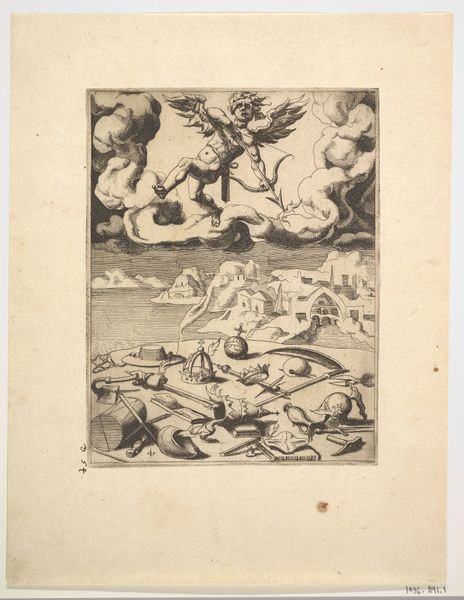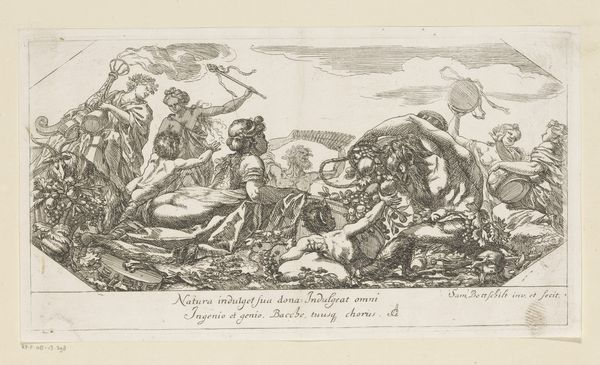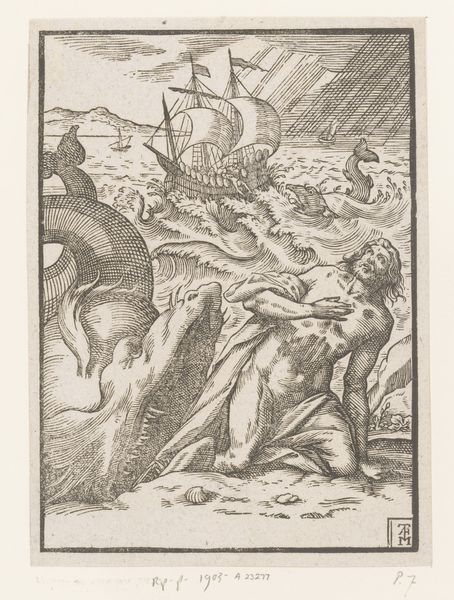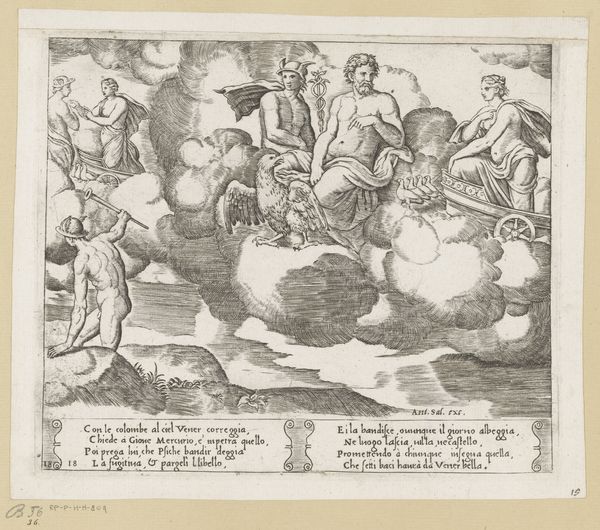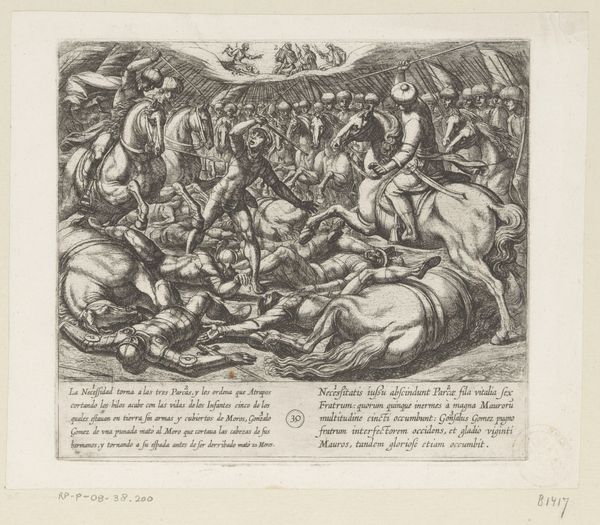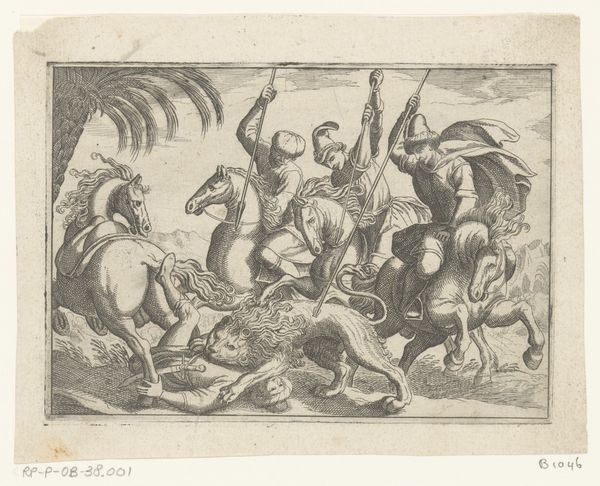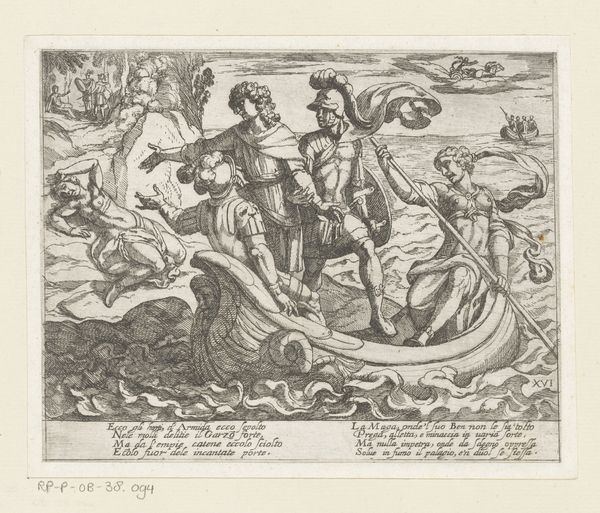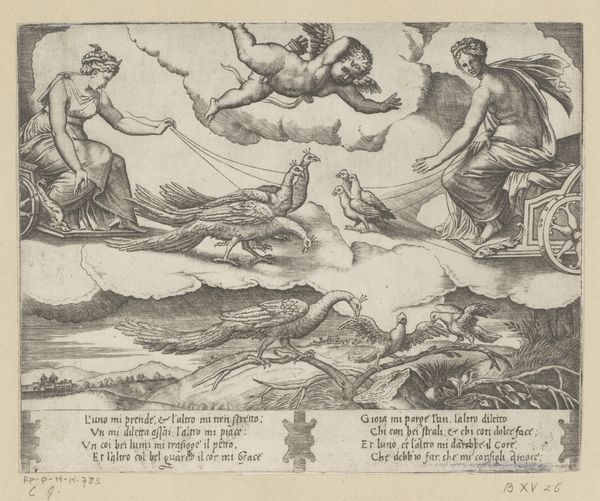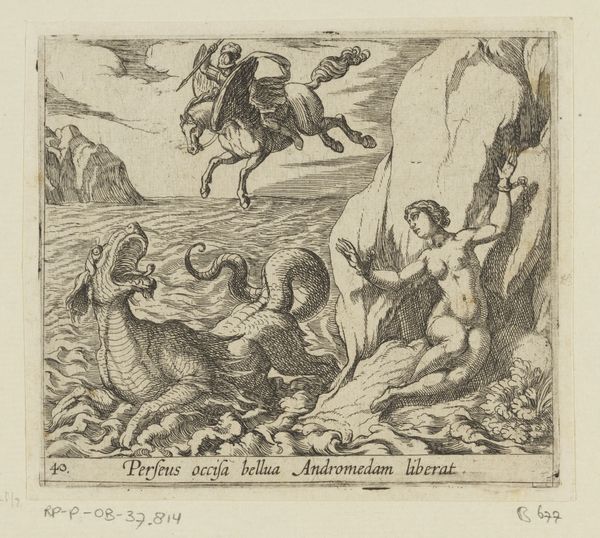
print, engraving
#
allegory
# print
#
figuration
#
11_renaissance
#
history-painting
#
italian-renaissance
#
nude
#
engraving
Dimensions: height 203 mm, width 238 mm
Copyright: Rijks Museum: Open Domain
Editor: Here we have "Venus Receives News from a Bird," an engraving by the Master of the Die, dating from around 1530 to 1560. It has such a striking composition. Venus is front and center, riding what appears to be a sea monster, and surrounded by other figures in the water. How do you interpret this work in its historical context? Curator: Well, let’s think about this print as a kind of propaganda. Look at how Venus is positioned – very deliberately placed as a central figure of power and beauty, harking back to classical ideals of beauty that were being revived in the Renaissance. And consider the political role of art: printmaking allowed for wider circulation of images, solidifying ideals that reflected certain social and political positions. Is this Venus promoting specific cultural values? Editor: I see what you mean. The print allows the image, and whatever message it carries, to be disseminated more easily than a painting only accessible to a single patron. So, could this idealized representation of Venus also have served a specific cultural function beyond just aesthetics? Curator: Absolutely. Think about the institutional support necessary for artists to create these prints and for the printing houses to produce them in quantity. Whose values are reflected? This also begs the question of how and why these classical figures, once pagan symbols, become so readily embraced and reinterpreted during the Renaissance. Who decides what the public sees? Editor: That's a lot to consider – the image itself, the process of its creation and distribution, and then who is benefiting from it all. So it's not just art for art's sake. It’s reflecting something broader about the period's social and political landscape. Curator: Precisely. And reflecting about this artwork allows to understand how the imagery solidifies power structures of the time. It's all part of the bigger story about who controlled the narrative then...and maybe even now.
Comments
No comments
Be the first to comment and join the conversation on the ultimate creative platform.
